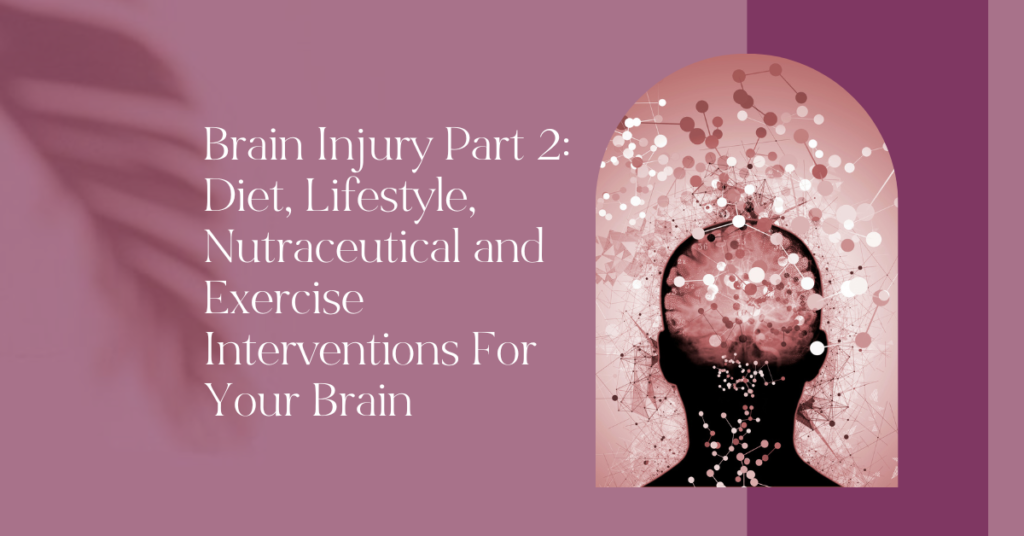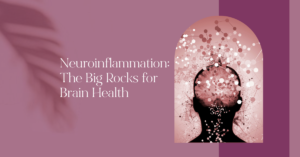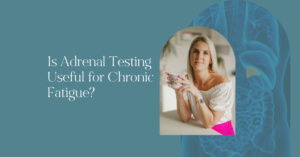Brain health should be at the forefront of your mind if you are someone who experiences fatigue. This is part 2 of a 3 part series on understanding and addressing the health of your brain, specifically if you have a brain injury or glial cell priming (as discussed here).
If you know you’ve had a brain injury or suspect that you may have glial cell priming, you are probably asking: What can I do about it?
I’ll be answering that question here but before I do; this isn’t only for people with a known brain injury. You may have a brain injury and not know about it OR you might just be interested in having a healthier brain.
Either way, if you experience any of the following symptoms (see below), you are in the right place. But make sure you read part 1 of th series first and then circle back here.
- Low mood
- Brain fog
- Excessive need for sleep
- Fatigue that gets worse when you use your brain
- Fatigue that got worse after an injury, accident or illness
- An overall sense of “slowness”
- Difficulty with your memory or finding words
Basics First
The good news is that, despite what your doctor may tell you, there is a lot of research on things that can help to support neuroinflammation generally and the shift of primed glial cells from an proinflammatory M1 state to an antiinflammatory M2 state, as discussed in part 1 of the series.
All health is built on basic foundations. Therefore as you work to support your brain health, you’ll want to make the following your non-negotiable:
Sleep
Sleep can be elusive at times, but whatever your situation, you want to find a way to sleep. This might mean getting to the bottom of blood sugar imbalances and learning to support your nervous system. It might mean having a nap during the day if you can. You can read more about sleep in this blog: How To Have A Good Nights Sleep
Energy
The health of your brain depends on access to energy, more specifically glucose or ketones as a fuel source. This means that ideally you want stable blood sugar (between 4mmol/L-6mmol/L) across the day. For some, just stabilising blood glucose will not be enough and you may need to transition to a ketogenic diet due to the benefit of ketones in switching M1 microglia to M2 microglia. You can learn more about stabilising blood glucose and / or switching to a ketogenic diet here and here respectively.
Oxygen
Oxygen is another non-negotiable need of the brain. Unless oxygenation issues are addressed, it will be difficult to get traction on your symptoms. The benchmarks for assessing oxygenation are:
- Anaemia must be ruled out. You can learn more about this here.
- Your pulse ox should be 98% or at least >95%. Many smart watches and Oura Ring have built in SPO2 monitors, you can also purchase a monitor here. If you have a specific health issue such as Chronic Obstructive Pulmonary Disease (COPD) you may need to consult your specialist about what is reasonable to achieve.
- Core body skin temperature should be similar to extremities, you can also objectively assess for cold hand and feet or if you press on your feet with your fingers, does the colour change back quickly or does it take a long time?
- Sleep apnea could be ruled out if necessary e.g you can buy a home assessment kit here.
- Blood pressure should be optimised at 120/80 mmHg
Exercise / Movement
Exercise and movement may support blood flow and circulation. Additionally, exercise can also support the production of Brain Derived Neurotrophic Factor (BDNF) which increases the expression of M2 glial cells.
Excessive exercise can increase oxidative stress and inflammation and make brain function worse, therefore, finding the right movement balance is an essential part of the process. There may be some trial and error required to get there. I have several other blogs on this which offer guidance. Read here and here.
In some cases, exercise may not be tolerated until brain inflammation has come down. In which case, you can focus on the other interventions discussed here and circle back to exercise as health improves.
Alcohol
Alcohol is something I frequently get asked about. Unfortunately the answer is what many people don’t want to hear: There is no amount of alcohol that is good for your brain.
As your health improves, small amounts of alcohol might be tolerated but if there is significant priming of the microglia, abstinence will most likely need to be lifelong.
Conversely, if you are very sensitive to alcohol this can be a sign of primed microglia, especially in the cerebellum. If this is the case, you may experience dizziness, vertigo, loss of long term memory and severe depression when drinking alcohol.
Remember, at the end of the day, hangovers are neuroinflammation!
Stress
Stress management is essential. In some cases it may require making some big lifestyle changes such as changing jobs, ending a relationship or moving back home with your parents to get more support.
I have written and podcasted extensively about stress management and nervous system support. Feel free to check out episodes 9, 38 & 34 of the Chronic Fatigue and Burnout Recovery Podcast or consider joining the Nurturing Resilience Self-Paced Course or next live cohort.
Level 2 Care
Once you have the basics in place, it might be time to do more fine tuning or add nutraceutical supplements for support.
Level 2 Dietary Interventions
The first step of dietary change may be just to stabilise blood sugar. Once blood sugar is stable there may be further interventions to take. These changes could be made step by step, tracking progress as you go:
- Gluten and dairy free diet
- Paleo diet
- Lower carbohydrate paleo diet
- Ketogenic diet
- Ketogenic diet + fasting (in some cases, this might be the only thing that works for primed glial cells)
If a ketogenic diet is going to be used, ideally it should be higher in omega 3, monounsaturated fats and medium chain triglycerides (MCTs) and lower in Saturated Fatty Acids.
Fasting is easiest to do once someone is keto-adapted. This can be determined by the presence of ketones in the blood but the absence of ketones in the urine. You would need to have a ketone blood monitor, such as the Keto-Mojo and urine strips to make this assessment.
Gut Health
Digestive imbalances can lead to systemic imbalances which can drive neuroinflammation and exacerbate glial cell priming. More specifically, gram negative bacteria in the gut can produce the endotoxin, Lipopolysaccharide (LPS). If the gut membrane is permeable, LPS can pass into the bloodstream triggering systemic inflammation and brain inflammation, impacting cognitive function.
Additionally, a healthy balance of commensal bacteria in the gut is required to convert plant-based chemicals known as polyphenols to active metabolites. Once activated, polyphenols are able to cross the Blood Brain Barrier (BBB) and downregulate M1 and potentially upregulate M2. For this reason, a diverse microbiome is important. We can create a diverse microbiome by eating a diversity of plant-based fibres in the diet. If someone lacks diversity in their microbiome, they may not respond as well to polyphenol supplementation (see next section).
Short chain fatty acids (SCFAs) are post-biotics which means they are compounds that are produced when bacteria in the gut feed on dietary fibre. They are also anti-neuroinflammatory compounds which work in the gut but help to reduce inflammation in the brain. To produce SCFAs we need good levels of commensal bacteria and dietary fibre. Alternatively you can supplement with short chain fatty acids, such as butyrate.
You can test SCFA production in a stool test such as the GI Effects Comprehensive Stool Test by Genova Diagnostic. More often than not I am finding low levels of SCFA in clients stool profiles.
Nutraceuticals
Supplements are supplementary to the foundations previously described and they can also be incredibly powerful tools to navigate primed glial cells and neuroinflammation. Here are some of the top picks.
| Nutraceutical | Mechanism | Benefit |
| Polyphenols: Resveratrol Curcumin Apigenin Luteolin Rutin | ↑ CERB ↓ NF-KB ↓ Free Radicals ↑ Microbiome Diversity | Balance M1 and M2 Prevent Mitochondrial Uncoupling Protect the BBB |
| Essential Fatty Acids EPA / DHA | ↓ Lipid Peroxidation | Protects Neuron Membranes Modulates Prostaglandin Inflammation Improves Neuron Membrane Function |
| Short Chain Fatty Acids Butyrate | ↑ Regulatory T-Cell Function | Balance M1 and M2 |
| Nutrients Magnesium | NMDA Receptor Antagonist | Reduces Neuron Injury |
| Antioxidants Glutathione Polyphenols | ↓ NF-KB ↑ CREB ↓ Free Radicals | Balance M1 and M2 Prevent Mitochondrial Uncoupling Protect the BBB Protects Neurons |
Infections
Part of addressing neuroinflammation is identifying and addressing any underlying infections that could be perpetuating the cycle of inflammation. It goes beyond the scope of this blog to discuss this in more detail but generally you may want to consider:
- Parasites: Protozoa and Helminths
- Mould and Mycotoxins
- Viral Infections
- Bacterial Infections e.g. h.pylori, dysbiotic bacteria in the gut
Exercises For Brain Health
Just as physical exercise in the right amounts can have anti-inflammatory benefits for the body and stimulate biogenesis of muscle mitochondria, the same is true for the brain; activation of neurons in the brain can reduce neuroinflammation and increase neuron mitochondrial biogenesis, improving brain energy.
If you can identify the regions of the brain that have been impacted, you can select exercises that will be supportive for those specific areas.
Here are some examples:
Frontal Lobe
Use the lumosity app to improve memory and attention.
The Motor Area
Do exercises that involve complex motor skills.
Speech Area
Do speech therapy or practise tongue twisters.
Temporal Lobe
Listen to music and focus on one element (e.g. an instrument, voice, tempo, pitch, rhythm) at a time. This one is great if noisy environments are tiring for you.
Occipital Lobe
Colour Visualisation (great if you have light sensitivity)
Basal Ganglia
Perform complex burst activity e.g. boxing, burpees, jumping jacks
Cerebellum
Balancing exercises and vestibular rehabilitation (great for dizziness, nausea, car or sea sickness).
Extra Note: The cerebellum projects into the vagus nerve and therefore impacts sympathetic activity and blood sugar. Poor functioning cerebellum can impact ability to dampen sympathetic nervous system.
Parietal Somatosensory Area and Parietal Superior Lobule
Body scans or somatic awareness exercises.
Conclusions
Looking after your brain is one of the best things that you can do if you want to increase and improve your quality of life long term. There are plenty of intervention here to make a start on. If you think you need more personalised help and support, consider working with me in a 1:1 capacity. You can find out more information here.









